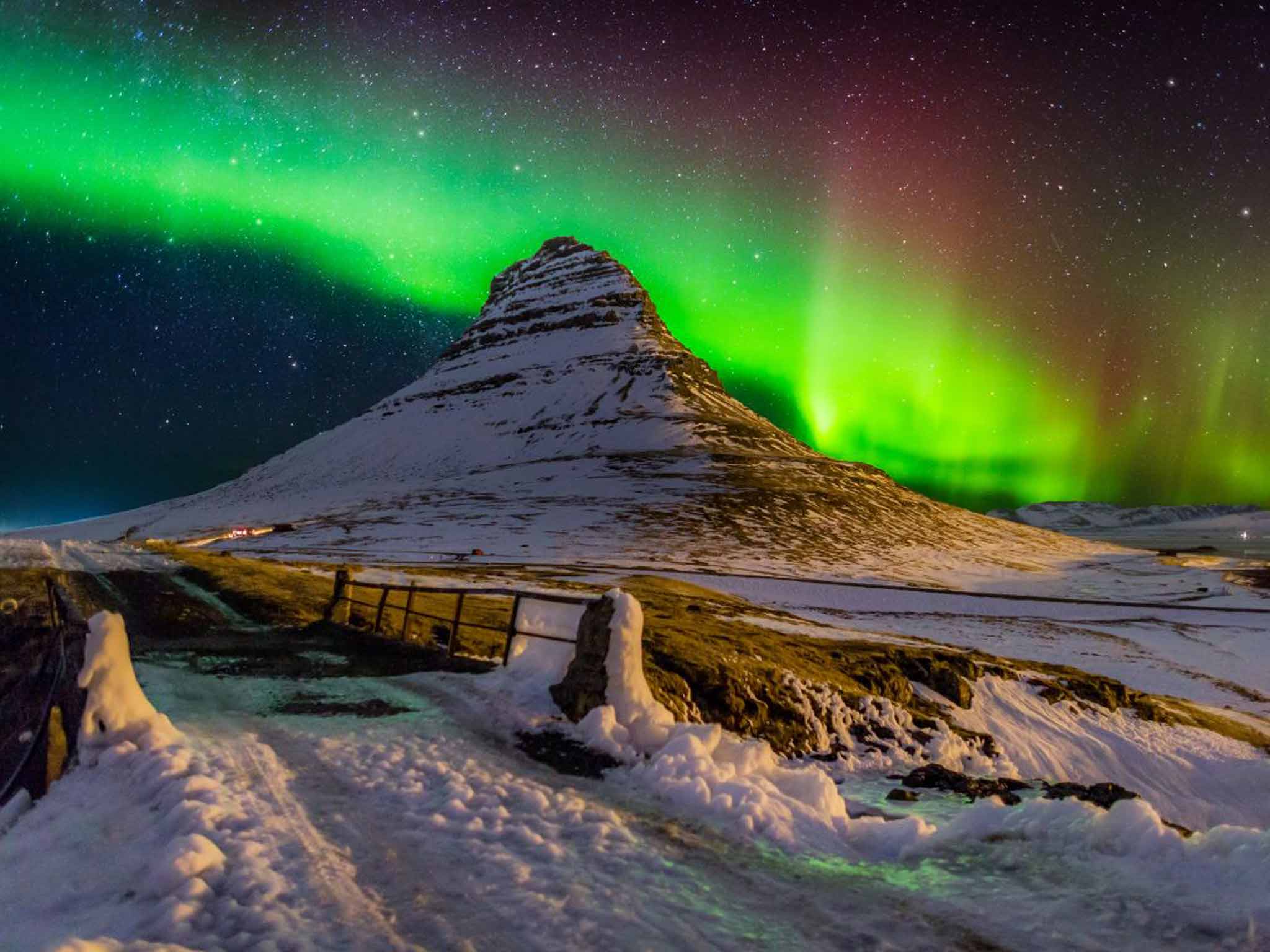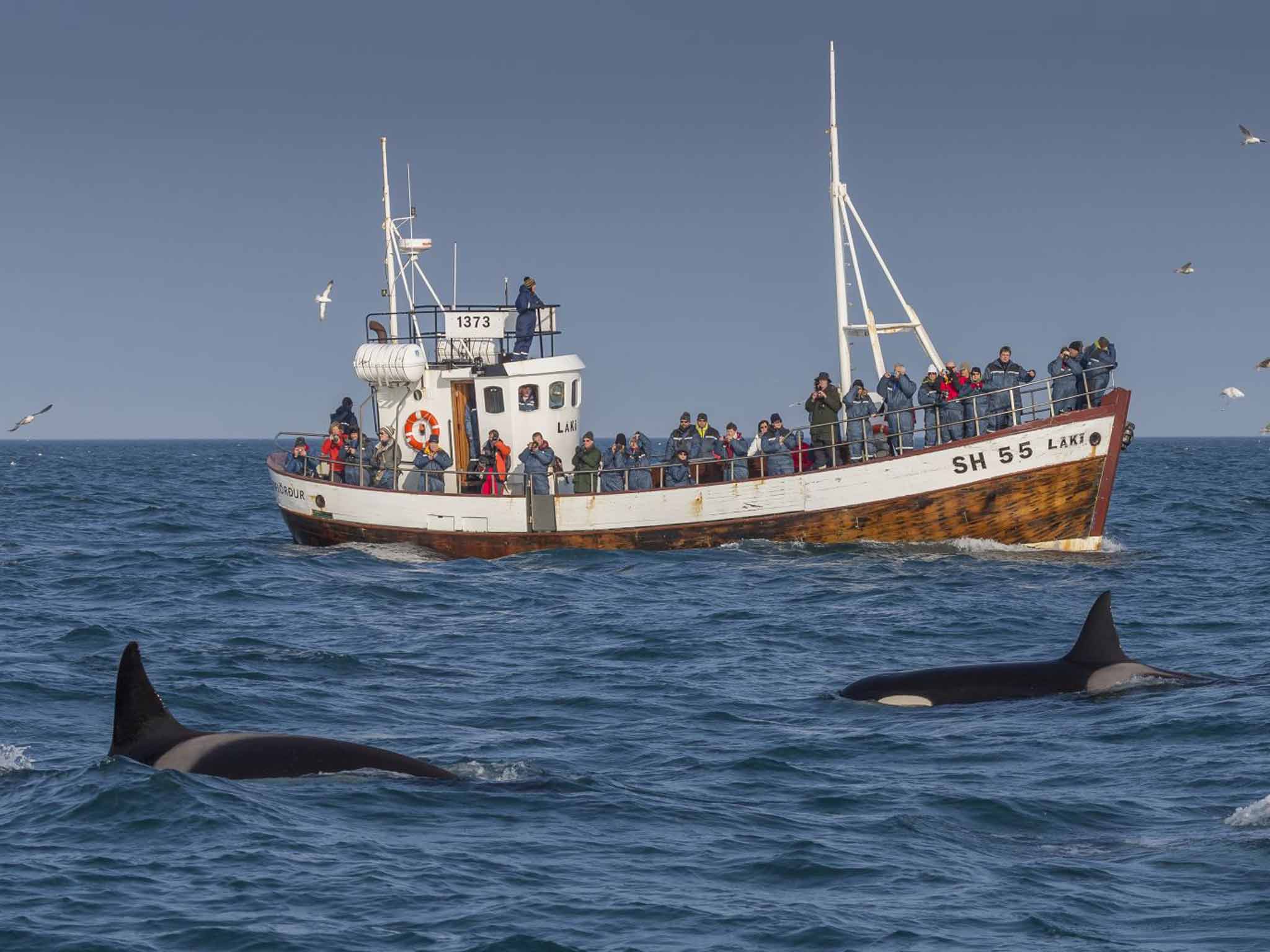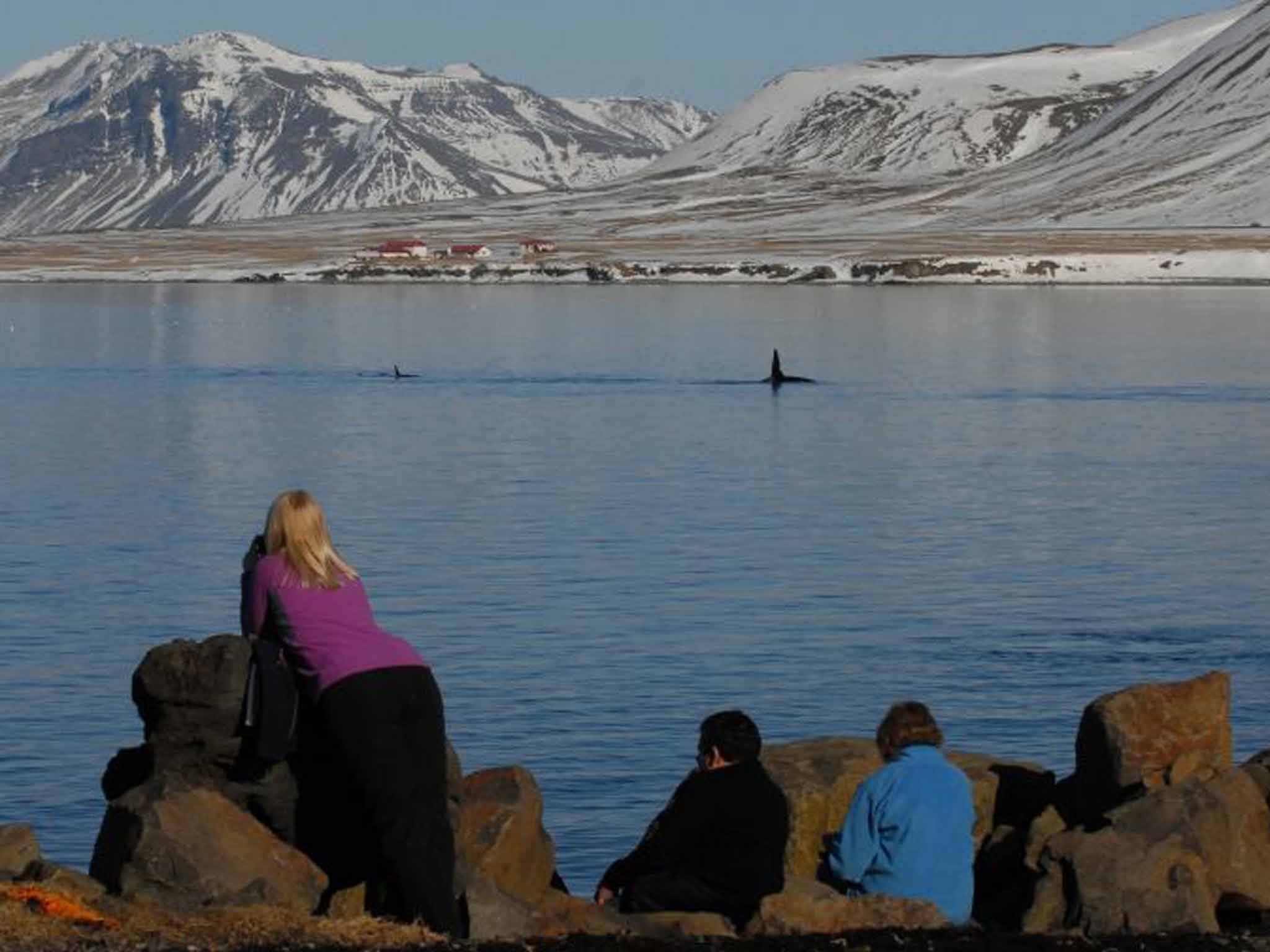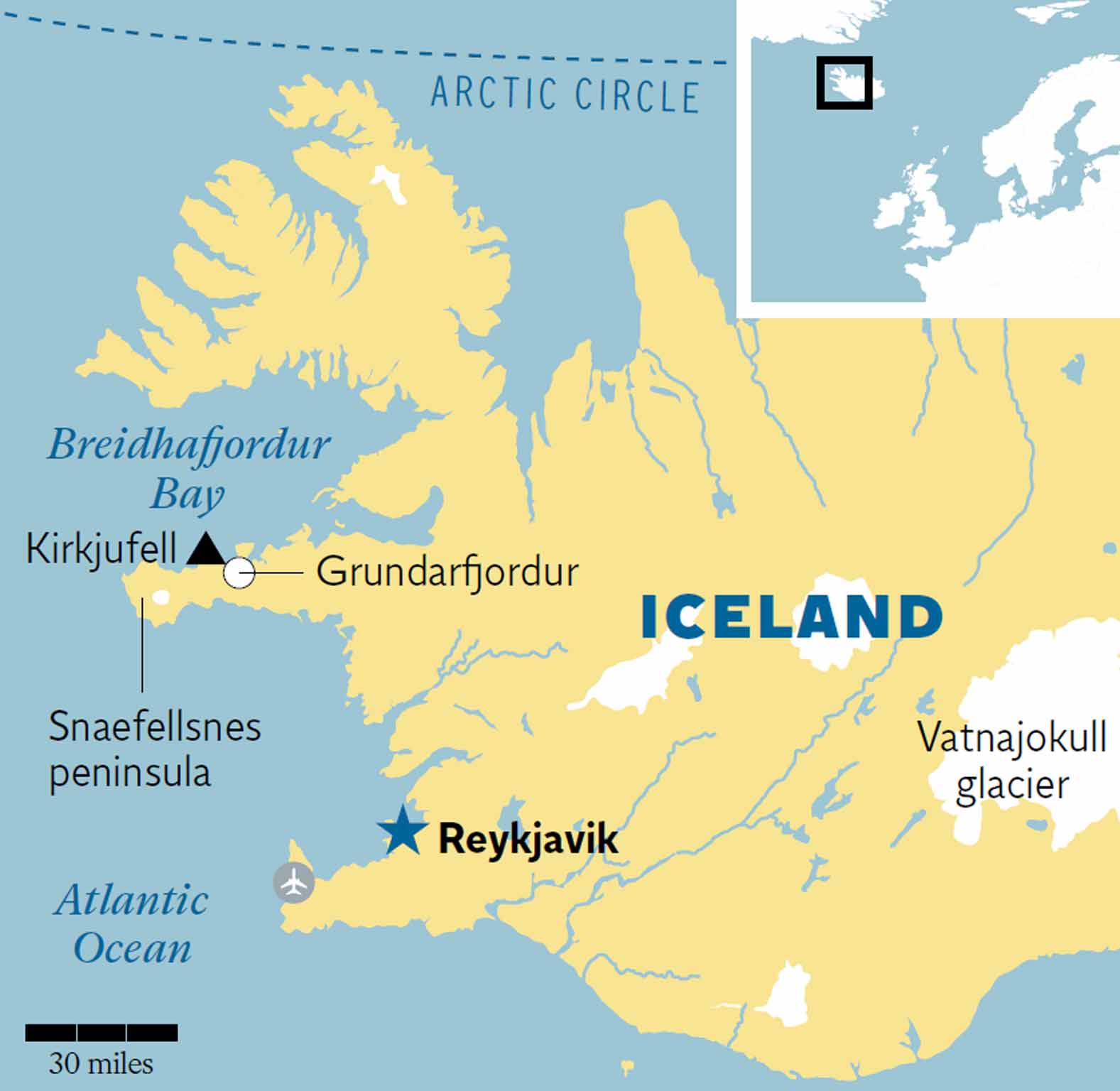Iceland: The Northern Lights and orcas in the wild
The rare opportunity to chase two of nature's elusive wonders in one trip was a gamble too tempting for nature lover Mark Rowe to refuse

A bookmaker calls it an each-way bet. A supermarket promotion would brand it as two for the price of one. But however you choose to package it, for the lover of the natural world it's an irresistible carrot: the chance of seeing two of the world's breathtaking spectacles, the Northern Lights and orcas, or killer whales, in the wild.
Both have the capacity to stir the soul. Am I being a little greedy or expecting too much? Ordinarily the two don't go together, but in recent years orcas have begun appearing closer to Iceland's shores in winter, coinciding with the optimum time to see the aurora borealis.
The orcas are following their prey, huge shoals of herring that winter in sheltered fjords. No one can say for sure, but climate change is a suspected factor in changing the distribution and behaviour of both prey and predator. The herring are just trying to stay alive in winter. Sadly for them, so are the orcas. There's a whole department of herring scientists – a wonderful specialism I think – at Reykjavik's Marine Research Institute, trying to unlock this mystery and what it might mean for the marine food chain.
The first half of the concord is swiftly secured. Along the road from Reykjavik to the village of Grundarfjordur in the north-east of Iceland, my journey is halted as the Northern Lights begin to stir. It's 11.30pm on the bone-cold 350m high Vatnaleid pass that traverses the remote and craggy Snaefellsnes peninsula. They appear like a single reindeer antler, a central stem of blue-green pushing upwards in the sky, with smaller stems that branch off as if in pursuit of daylight. These coalesce into a bundle of milky mist that shoots out a tunnel of green in an arc across the sky. All this happens against a backdrop of chalky mountains illuminated by a gibbous moon. Another flourish, and the lights are shaped like pictographs, appearing as translucent Nordic stick people: the sky is filled with rock art.

I see them again the following night. Technology has created the sport of aurora chasing. Apps tell you how strong the aurora are likely to be (something called the Kp-index, which alerted much of the UK to glimpses of the lights a fortnight ago); others relate not only where the skies are clear but where the cloud is wispy enough. After dinner my guide, Alexa, bundles me into a minibus and we stand by a waterfall until midnight has passed, taking in the drama.
So, that's half the deal sealed. But the orcas prove more problematic. They appear to have relocated further out to sea, beyond a deep swell too much to stomach for most wildlife-loving landlubbers. We wait, passing the time by taking in the raw beauty of the Grundarfjordur channel and the Snaefellsnes peninsula, trawling around frozen waterfalls, up a diminutive volcano and goggling at basalt columns hewn from the same template as the Giant's Causeway.
Grundarfjordur is enclosed on three sides by sheer cliffs and serrated mountain edges. I'm just below the Arctic Circle and yet it's like I am firmly north of the line. Nature's handiwork has deposited layer upon layer of flattened lava, scoured it with glacial melting and finessed the results with the scalpels of punishing winds. The signature mountain is Kirkjufell, whose triangular shape, heaving abruptly from the shore, echoes with gentle irony that of the elusive orca's dorsal fin.
Later, those same winds softly toss our boat around the fjord. We see no orcas, but gannets, purple sandpipers and great black-backed gulls whizz pass, flocks of more sedentary eider ducks bob by in their fetching green feathered overcoats. Alexa, ever redoubtable and undentable, gets up before dawn to scour the fjords for dorsal fins. The tour driver, Hjalti, drives along the high coastal road pursuing the same goal.

We walk around the village again. It's a slippery ordeal as the pavements and roads are comically icy. All the salt goes to the local fish-processing factories where it dries out the cod. The smell of fish hangs heavily in the air. In winter, even gravestones are illuminated with fairy light. Horses turn their haunches, warmed by yak-like hair, to the near gale-force winds. Snow bunting settles on rooftops. The few houses of this remote outpost are low-slung, wisely flattened in the teeth of the elements. I am told the police station doesn't have any police. It's a bleakly magnificent scene.
I arrive a day or so after the first sun heralds the beginning of the end of winter. For three months, these high-sided mountains have imposed a polar night, keeping the sporadic dabs of weak sunlight at bay. The return of the sun is celebrated by the baking of sunshine pancakes filled with rhubarb jam.
But still no orcas. Perhaps an earthquake or a playful volcano might rustle them up. Talk turns to Vatnajokull, which is making people a little twitchy. This 2,000m stratovolcano sits under a glacier, straddling the rift between the North American and Eurasian continental plates, biding its time.

Then fishermen report promising news. The herring have re-entered the fjord. If the orcas feel peckish they should follow. They will stun their prey with tail-slaps, a huge thwack that also serves as social fun and games in orca circles. Alexa delivers a lecture where we listen to the orca's underwater call that seems to herd the herring together. It reminds me of trains arriving at Carnforth station in Brief Encounter, a mixture of whistles and breaking wheels.
The orcas, though, prove stubbornly uncooperative. It's a gentle reminder not to allow one factor to make or break your trip. By and large our group accepts it with good humour but I find myself moved by how desperately some want to see them.
We must console ourselves with a pod of white-beaked dolphins that playfully flirt with our boat, a smattering of delectable little auks, and the occasional guillemot. A kittiwake looms up at the stern of the boat, hanging in the air for several minutes. I've always loved this hauntingly balletic bird, and for me this dainty cameo is a highlight of the trip.
The night before I leave Iceland there is one further brief light show. A velvet green curtain descends. Did I say curtain? It weaves up and down, sideways, folds, bunching up at the hem, like the skirt of a coquettish flamenco dancer. Then, as soon as it came, it's gone.
Getting there
Mark Rowe travelled with Discover the World (01737 214 250; discover-the-world.co.uk) which offers a range of wildlife and Northern Lights escorted tours in Iceland. These start at £920pp for four nights' accommodation with breakfast, transport, excursions and the services of an expert naturalist driver/guide throughout. Flights extra. Prices and tours for 2015/16 Northern Lights and orca season to be confirmed.
Reykjavik is served from the UK by easyJet, Icelandair and Wow Air.
More information
Join our commenting forum
Join thought-provoking conversations, follow other Independent readers and see their replies
Comments
Bookmark popover
Removed from bookmarks